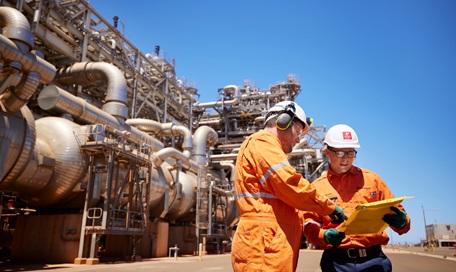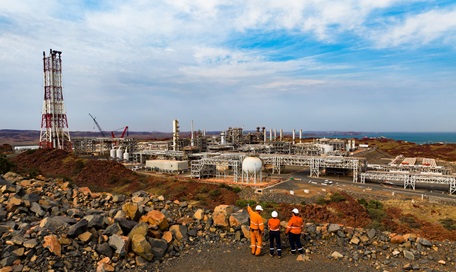.tmb-ptitle-mob.jpg?sfvrsn=f6274210_2)
Scarborough Energy Project
The Scarborough Energy project (during construction and over its productive life) is expected to result in a significant direct contribution to the Australian economy through capital and operational spending, employment, taxation payments and exports.
-
A$52.8 billion
Taxation and royalty payments estimated to be generated in Australia between 2024 and 2056
-
A$90 million
Committed to spending more than A$90 million with Karratha businesses
-
A$3.6 billion
Awarded more than A$3.6 billion in contracts to local Western Australian businesses
-
8.5 million
Expected to be large enough to power more than 8.5 million homes for more than 30 years*
MYTH
The Scarborough Energy Project won’t benefit Australia.
FACT
A report prepared by consultancy ACIL Allen has found that Woodside’s Scarborough Energy Project is expected to generate an estimated A$52.8 billion in taxation and royalty payments, boost GDP by billions of dollars between 2024 and 2056 and employ 3200 people during peak construction in Western Australia**.
The Scarborough Energy Project (during construction and over the life of the project) is expected to result in a significant direct contribution to the Australian economy through capital and operational spending, employment, taxation payments and exports. Most of these direct impacts are forecast to be realised in Western Australia, particularly in the Pilbara. The development of the project is expected to provide a boost to Western Australia, increasing jobs and bringing work through the supply chain.
The project is expected to generate an estimated A$52.8 billion in taxation and royalty payments and boost GDP by billions of dollars between 2024 and 2056, as well as employ 3200 people during peak construction in Western Australia.1 The project has awarded more than A$3.6 billion in contracts to local Western Australian businesses, like Hicks Civil and Mining, a 100% family-owned Pilbara Aboriginal business.2 The project is expected to be large enough to power more than 8.5 million homes for more than 30 years.3
Woodside is working closely with its key contractors to maximise opportunities for local, regional and Western Australian businesses across the supply chain for the project. Many of the direct opportunities for the second liquefied natural gas (LNG) processing train – Pluto Train 2 – are expected to be realised in Western Australia, including Indigenous participation opportunities. There are firm commitments to support skills development and training for Indigenous and non-Indigenous residents in the Pilbara and Gascoyne to meet employment and supplier opportunities arising from the development.
Click here to learn more about the Scarborough Energy Project, its contribution to the Australian economy and the support it can provide to other countries during the energy transition.
* Based off annual Australian household energy use, ‘Australian Energy Statistics Energy update 2021 Report’, Diser 2021.
** woodside.com/docs/default-source/our-business---documents-and-files/scarborough/economic-impact-of-the-scarborough-energy-project_summary-brochure.pdf.
1 ‘Economic impact of the proposed Scarborough Energy Project’, ACIL Allen, March 2024 (woodside.com/docs/default-source/our-business---documents-and-files/scarborough/economic-impact-of-the-scarborough-energy-project_summary-brochure.pdf).
2 www.woodside.com/media-centre/news-stories/story/local-business-spotlight-hicks-civil-and-mining.
3 Based off annual Australian household energy use, ‘Australian Energy Statistics Energy update 2021 Report’, Diser 2021.
Additional Facts

.gif?sfvrsn=2f994240_3)
.tmb-r-story.jpg?sfvrsn=8302b953_2)

